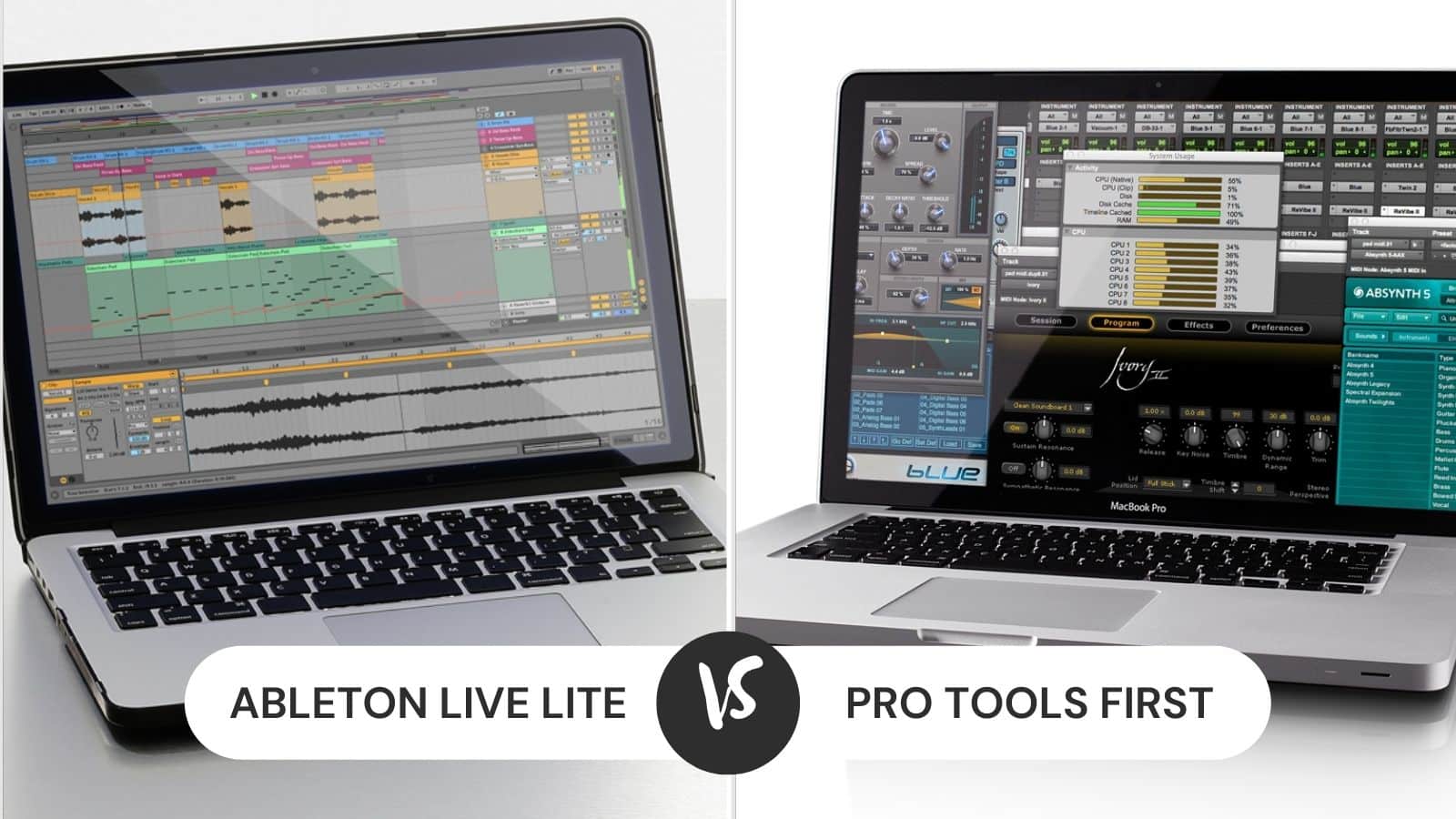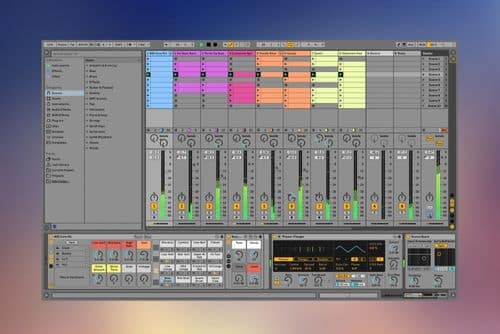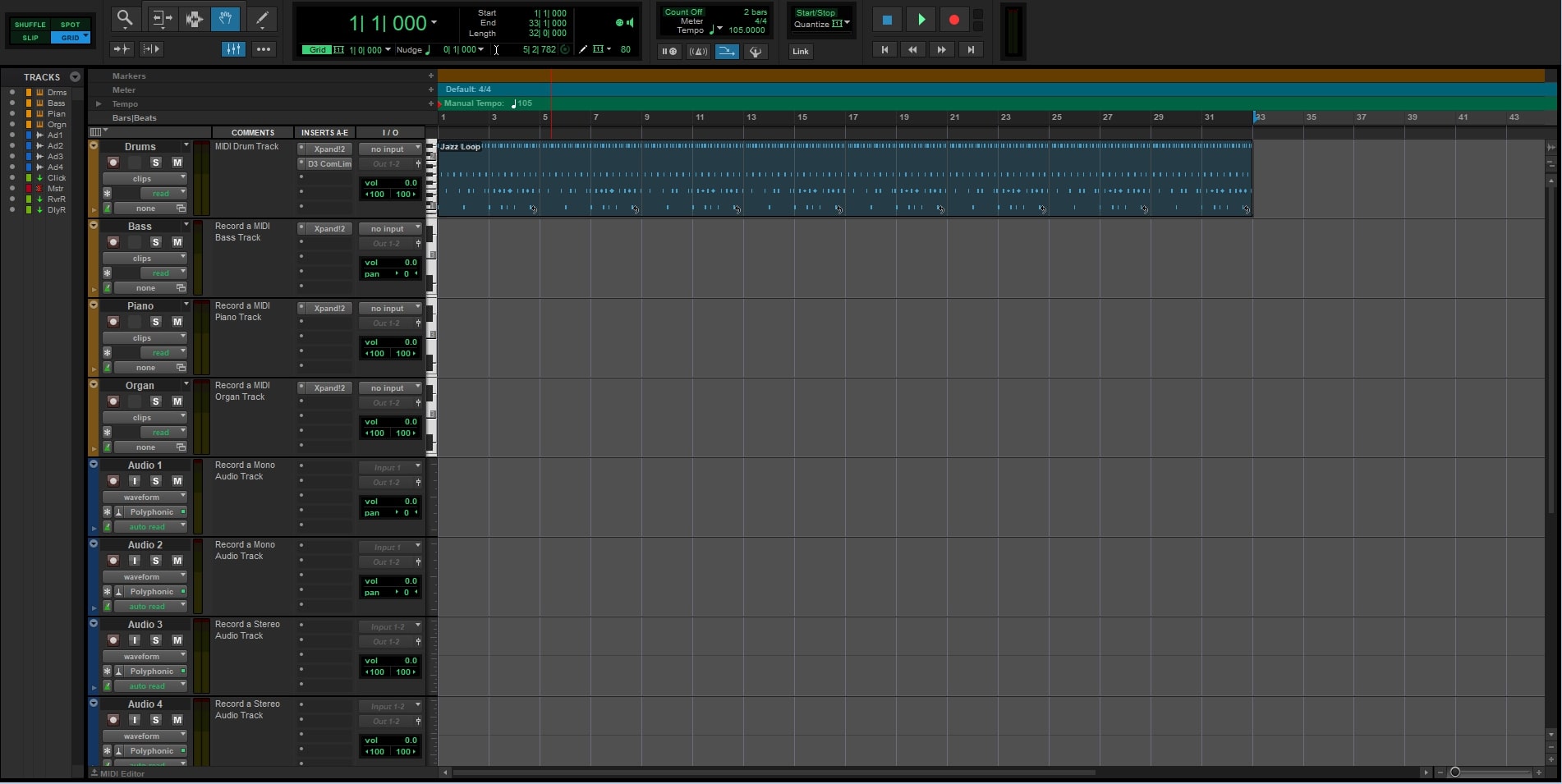
Digital audio workstations or DAWs are software designed to manipulate music and adjust audio quality, create new tunes, add reverb, design EDM, and much more.
Most of these apps have evolved to be well-built and they incorporate several complex features that affect the overall process of music production.
Because production software is always in high demand, there are tens of options to choose from- each one has its fair share of advantages and disadvantages.
Out of this plethora of software, Ableton Live Lite and Pro Tools First are two highly sought-after DAWs. They are the free versions of Ableton Live and Pro Tools (barring the free trial you get after installing the software).
While both have great features and tools that are essential for music producers and composers, there is no perfect program and they both have some key differences which may or may not improve your overall experience using these.
We’ve taken a look at these below and compared them for your ease of decision-making. Let’s jump in!
Ableton Live Lite vs Pro Tools First
| Features | Ableton Live Lite | Pro Tools First |
|---|---|---|
| Availability | Free, comes with some hardware like Clarett and Scarlet. | Free, only available for downloading. |
| MDI to Audio | Allowed. | Absent. |
| Recovery | No automatic recovery. | Automatic recovery present. |
| Destructive Audio Processor | Missing. | Present in Audio Suite |
| Plug-and-Play | Present. | Absent. |
As we mentioned above, both Ableton Live Lite and Pro Tools First are robust, well-built audio editors that run MIDI.
They also host plugins (although they’re limited in these free versions) and can export your manipulated audio clips in various formats including mp3, AAC, OOG, WAV, etc.
Both these programs are effective tools and great for beginner composers and audio engineers. Despite being free, both these software are far from under-developed and the features aren’t very restricted.
Once you get the gist of using these programs and have experience with DAWs, you can move on to the premium versions for extra perks.
Ableton Live Lite
First up, let’s talk about Ableton Live Lite. It’s one of the best options if you want to start learning to use DAWs. The controls and tools are easy to learn and can enhance and edit music in multiple ways.
If you’re particular about attention to detail, then this program is for you. The Ableton Live Lite is praised by users for its minimalistic visual layout, which makes the program easy to navigate.
Moreover, the program doesn’t pop open many external windows and most tools are easily accessed in one list. Ableton Live Lite has a plug-and-play ability too, which makes the recording and editing process super quick.
Ableton Live Lite comes free with some hardware equipment. The license never expires. Scarlet and Clarett users can benefit from the free license and get updates for free too.
Important Features
Moving on to the features, the program has a unique GUI focused on ease of use. There’s a session view menu for easier and more flexible viewing.
You can record up to 192 kHz and 32-bit. Ableton Live Lite also excels at user customization and has features like custom menus, color-coding, custom shortcuts, and MIDI mapping control.
You can perform most tasks with Quantization and Automation, and won’t have to enter several menus for performing basic tasks.
These customization features not only let you personalize the program, but this can cut down on the significant time wasted when you’re entering menus and clicking multiple times to access one feature.
Other than that, you are also allowed to make changes to your driver settings or audio interface without having to stop or restart your current session.
This means you can make changes on the go and tweak your program driver while editing as much as you want. This is important when you want to find the right balance of sounds and stability.
You can also move the audio files between MIDI devices and different audio interfaces and it doesn’t mess up your workflow.
Pros
A big advantage of Ableton is that the Session View and Arrangement View are separated– the former displays tracks vertically on a large grid with launchable audio loops while the latter represents the tracks in a traditional horizontal mode.
Because of this difference, music producers can experiment around and use whichever method is fastest. Simply clicking on a grid enables you to play, record, stop and loop audio, part of the instant playback.
The Session View is effective for live performances and pre-recorded clips alike. You can time-warp, quantize, and modify each clip even during a performance. This is an excellent feature for bands and DJs who play live with a backing track.
Cons
Abelton Live Lite lacks some features when it comes to editing audio waveforms, so the mixing efficiency is reduced in comparison to other Ableton tools like the Ableton 10.
Other programs also have better navigation when it comes to EDM production. Abelton Live Lite also lacks a destructive audio processor, which Pro Tools First is equipped with.
The Audio Suite tool on the latter lets you make destructive edits on whichever segment you want. You won’t have to load any plugins that consume a high amount of RAM, and your sessions will also run smoothly when the CPU is free from extra load.
Pro Tools First
For composers and producers interested in using an intuitive and interactive software, Pro Tools First is a must-try.
Pro Tools is obviously extremely popular and the go-to for nearly all producers in the music industry, but the free version isn’t shabby and keeps the charm and robust design of the original software, albeit with more restrictions.
Pro Tools First doesn’t come free with a specific device- rather, you can just hop on to the Pro Tools website and download the First version using your account.
You can create an account simply with your email- there’s no need for credit card or other info.
Important Features
As mentioned before, Pro Tools First has an Audio Suite which makes it the most attractive option for sound engineers. Audio Suite lets you make on-the-go edits to short segments (or clip segments) without having to load the full plugin.
Other important features include various audio grabbing tools, multiple core editing modes (slip, grid, shuffle, spot) for audio manipulation, and precision audio editing tools.
These precision tools let you navigate faster with markers and zoom in on the tiniest bit of a waveform. If you’re all about precision and accuracy and want a highly responsive software, then Pro Tools First is for you.
Pro Tools First MIDI is pretty much the same as the original premium version, so it’s very easy and familiar to use. If you want to use any plugins, you’ll have to pay for those, but individual costs don’t stack up much if you’re relying on just a few.
Pros
Although Pro Tools is well-built and maintained, bugs can occur. Keeping this in mind, Avid has introduced an automatic recovery system, so even if you forget to save your session, most of it is likely backed up in a safe file.
This is something Ableton lacks- you’re prone to losing all your progress on that program.
Cons
Pro Tools First has some major drawbacks. For example, you can’t bounce the MIDI to audio. The MIDI editing tools are quite limited comparatively, though you can freeze a MIDI.
The plugins are quite basic, which is good for beginners but experienced engineers may find it lacking.
Pro Tools also lacks the plug-and-play ability that Ableton Live Lite provides, and there are no shortcuts and MIDI maps– you have to use the Pro Tools controller only.
You’re also limited to one EQ, one virtual instrument, and one compressor. However, compressors are rarely used in production.
The Winner
After comparing the features and differences, it’s clear that Ableton Live Lite is aimed at EDM producers with better MIDI plugins, while Pro Tools First is best for mixers and composers wanting to edit recorded clips.
But when all features are considered, Pro Tools First outshines Ableton Live Lite.


